Everything You Need to Know About Hydrangeas—Including How to Change Their Color

"Hearst Magazines and Yahoo may earn commission or revenue on some items through these links."
With rounded blooms resembling pom-poms and flowers that range from cornflower blue to soft purple and magenta, hydrangeas are unabashedly cheerful and have a knack for adding charm wherever they grow. They're also a fun way to work some gardening magic, as you can induce some of these flowering shrubs to change colors—if you know a thing or two about soil acidity and how to tinker with it. (And if you don't, well, read on!)
First, the basics. There's a half-dozen hydrangea types that commonly grow in the United States. The most popular are bigleaf hydrangeas, some of which are pom-shaped with clusters of florets. (If you want to mix up colors in your garden, turn your attention to bigleafs). Smooth hydrangeas have thinner leaves and longer stems, while panicle hydrangea are cone-shaped. Hydrangeas generally grow in USDA Hardiness Zones 5 to 9 (see your zone here), although there's some variation depending on the type.
The best time to plant hydrangeas is in fall or early spring, and they grow best in garden beds, containers, and as shrub borders, says Mallory Micetich, a home and garden expert at Angi, a service that connects users with home and landscaping pros. You want your hydrangeas to have a strong root system before they're exposed to extremes, like 90-degree summer days.
With that primer out of the way, here are five expert-approved ways to help you grow hydrangeas—and orchestrate a color-changing magic show in your garden.
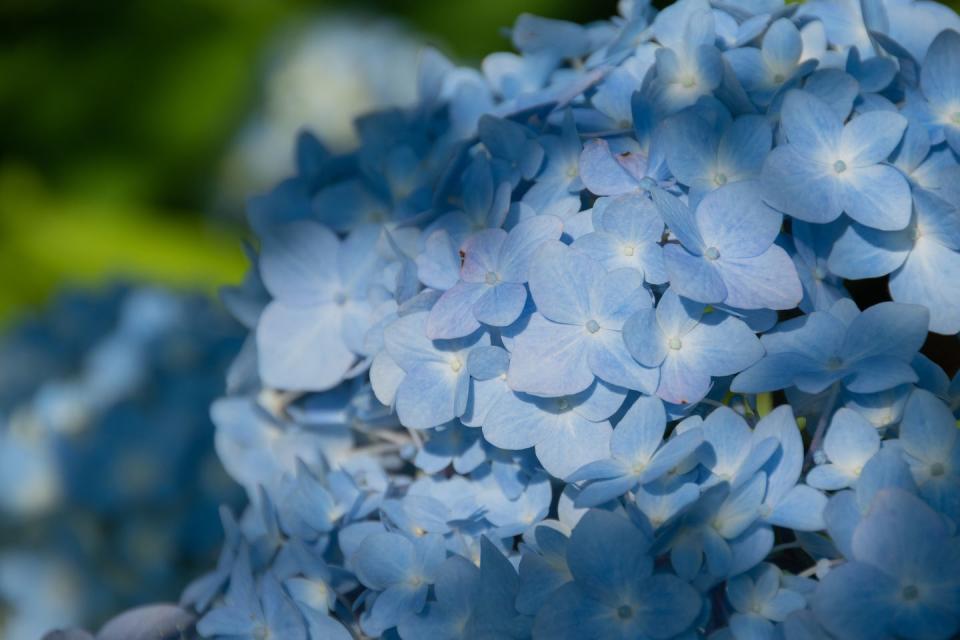
Throw Hydrangeas Some Shade
Hydrangeas can often thrive in shaded areas of yards where many other plants cannot survive, says Teri Valenzuela, natural science manager at Sunday Lawn Care. That means you can incorporate blooming hydrangeas in locations where you receive less sunlight, but want to add color, season-long blooms, and perennial growth to your garden.
That being said, most hydrangeas need roughly four to six hours of sunlight a day, or else they won’t get much flower growth. And while they can handle shade, you'll want to avoid planting hydrangeas underneath a tree because their roots will have a hard time competing for water and nutrients.
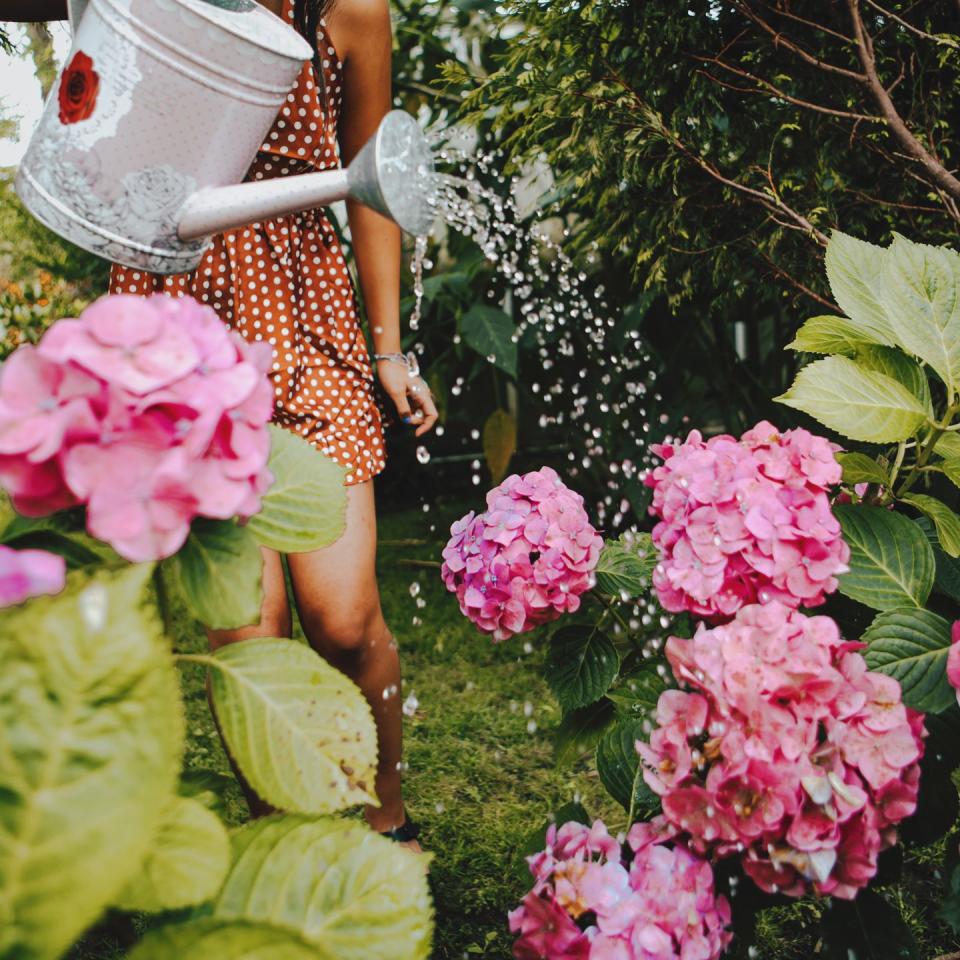
Plant in Well-Drained Soil
Whether they're growing in a garden or a pot, hydrangeas don't like to be in standing water, so make sure the soil is well-drained, says Bryan Clayton, CEO of GreenPal, a site that connects homeowners to lawn care services. You also want to give hydrangeas some space, planting them at least three feet apart from one another.
Water hydrangeas regularly, especially during dry spells, Clayton says.
"They need consistent moisture to thrive, but don't overwater," he advises. "If you notice the leaves yellowing that might mean you're putting too much water on them."
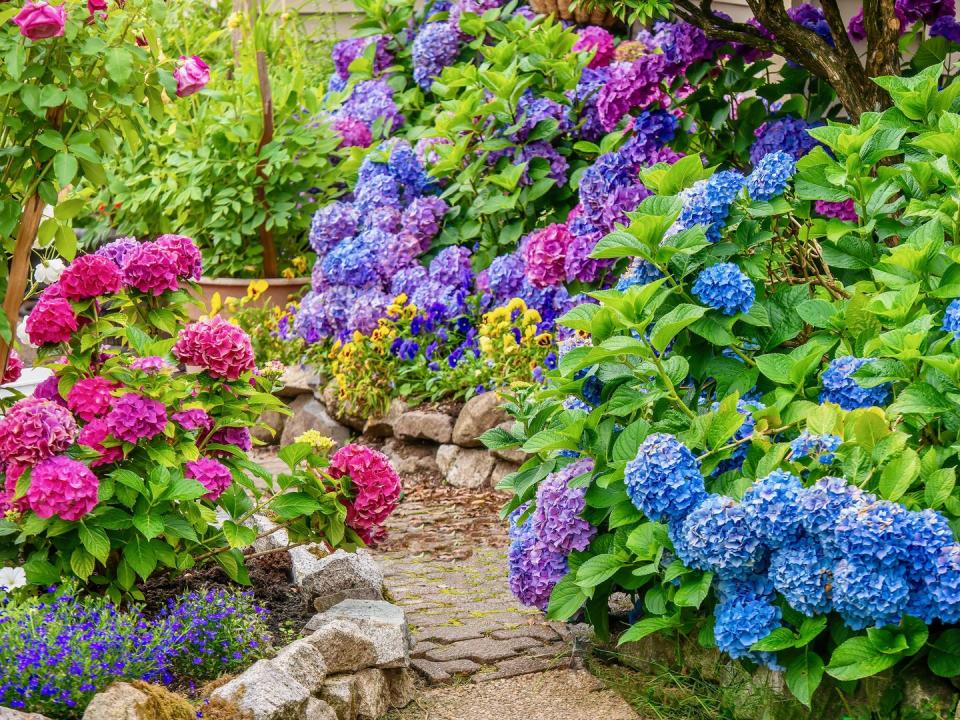
Change Up Their Colors
Hydrangeas are a fun flower (and a neat at-home science project) because you can make their blossoms change color by adjusting the soil's pH level, Micetich says. Not all varieties will color-shift, so if this is something you want to try, look for bigleaf hydrangeas, with mophead and or lacecap heads. You'll also have more control when it comes to adjusting the soil's pH if you plant your hydrangeas in a pot or separate flower bed, she points out.
Start by testing your soil's pH level with a $13 at- home kit. From there, you can make the soil more acidic or basic based on the color you want to end up with, Micetich says.
"In general, more acidic soil will turn them blue or bluish, while basic soil will turn them a more pink color," she advises.
She provided this pH scale for hydrangea colors:
Bright blue: 4.5
Muted blue: 5
Violet blue: 5.5
Purple/blue and pink: 6-6.5
Pink: 7.0 or higher
To make your soil more acidic, Micetich recommends adding a soil acidifier, 25-5-30 fertilizer, coffee grounds, citrus peels or grass clippings to help lower the pH levels.
To create more basic soil, add 25-10-10 fertilizer, ground lime, or crushed eggshell to the soil.
Then, be patient. It usually takes your hydrangeas a few months to adjust to the soil, Micetich points out.
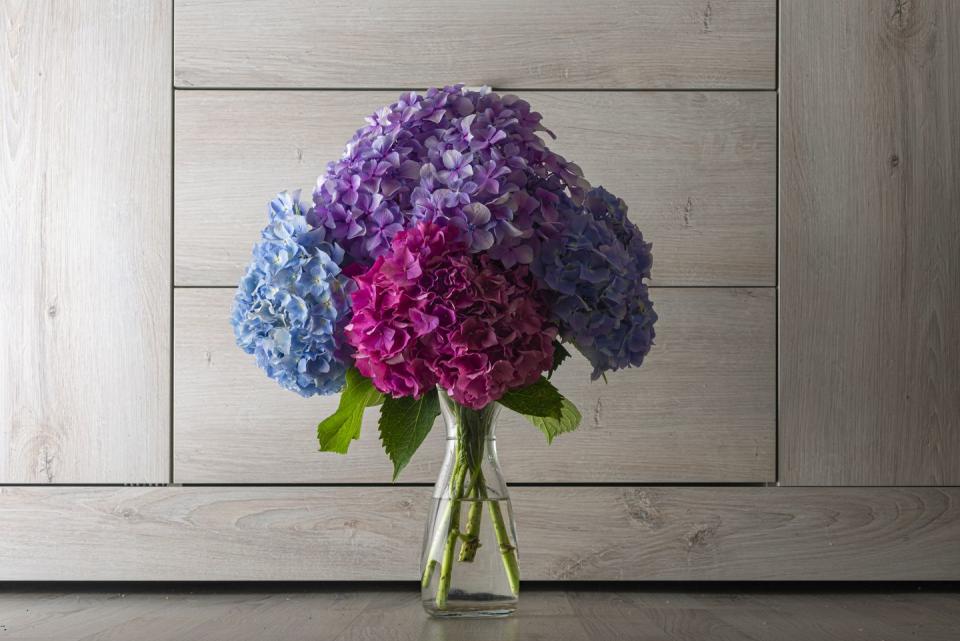
Create Bouquets
Gift yourself or your neighbors some fresh-cut flowers every once in a while, Valenzuela says. Not only will they bring a little cheer to your space, but you'll do the shrub good, too.
"Hydrangeas tend to bloom all growing season long, but can benefit from a well-timed trim," she says. "While their blooms are beautiful on the plant as is, by pruning hydrangeas for cut flowers indoors, you can actually encourage more flowering outdoors."
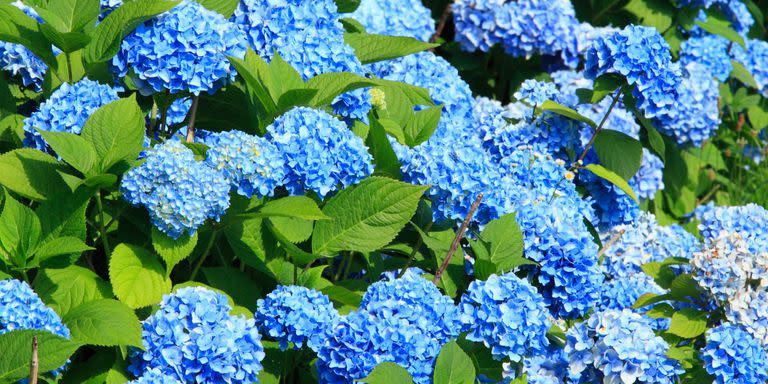
Add a Dash of (Epsom) Salt
We'll leave you with a lesser-known tip experts agree on: Apply Epsom salt (i.e. magnesium sulfate) to the soil surrounding your hydrangeas. It can help improve their colors, promote more robust blooms, and reduce the risk of fungal infections.
You Might Also Like

